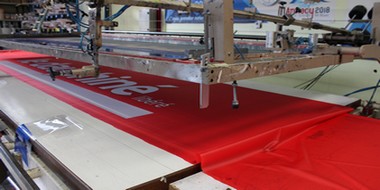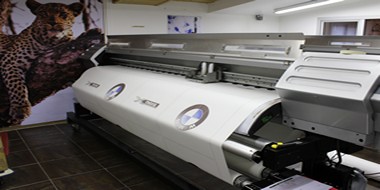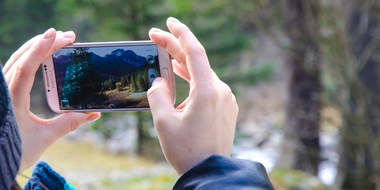
It is the heart of our profession. This is a printing process based on the stencil principle on which we will apply some ink by scraping through stretched canvas on an aluminum frame, also called the “screen”. That one is made up of thin stitches that will let the ink passing by the defined spots, to drop on the support. As an advice, we will be telling you to use this method, up to three different colors, so that it will still be economically reasonable. Indeed, one screen and one silkscreen printing will be needed for each color of your illustration.
Benefits:
This process is really attractive in case you will need a very large collection, because the cost of a screen will be amortized quickly with important quantities.
The silkscreen printing is the greatest way of printing in order to get the brightest colors. The application of the ink is offering a great stability and a good opacity. It can be used of every kind of supports, such as PVC, fabric, or wood.

That process will allow a high resolution impression on textile.
In this specific case, you logo or illustration will be printed on a special transfer paper, thanks to a numerical printer. Then, this paper is putted in touch with the fabric (only synthetic) on a calendrer machine. The set is then heated at 195°C, on average, depending on the kind of fabric.
The heat and the pressure are boosting the transfer of the ink form the paper to the fabric. Then, your pattern will be on the textile
Benefits:
One of the main advantages of the sublimation is to be able to reproduce any complexes patterns with gradation or many colors such as on photography for example. The rendering of the colors is very luminous.

This is a numerical impression directly made on the support, working like you office printer. This printing process made with a continuous flow, is optimizing the period of impression, because it allows reproducing a new picture all the time, directly generated by a computer (“computer-to-print”). This process could be used as well on PVC, Jet Tex, but also on adhesive material. The final result will reproduce with the same quality, a complex picture or a very simple logo. The numerical impression by inkjet printer is also allowing dealing with supports that may be on a very big scale, up to 5 meters of width. Once this step is made, your support is already ready to be assembled.
Benefits:
This way of printing is fast, and gives a very good rendering on each one of the material that we talked about before. This printing process allows to make unique pieces or a full set collection, but still with an reasonable cost.

This process allows your visual to be seen on both sides. In that case, the impression is called “see-through”. The dye printing is an extra step added to a silkscreen or a numerical impression, in order to let the color penetrating more deeply into the textile. Thanks to this step, we can create a “chemical bridge” between the color and the textile fiber. The fabric is dropped into a bath with metallic salts (ferrous sulfate, copper) and acetic acid (vinegar) that will intensify the color by creating a dense and lasting adhesion.
Benefits:
This process is really advantageous in case you need to get a mirror aspect on your banner with a finish that will be as intense on both sides. The colors are bright and very qualitative.
If the French manufacture is a concept very well settled into our minds, it has not been the case a few years ago. We are daily confronted to a culture and a globalized consumption and even more inside the world of the visual communication equipment.
Today, we are aware of the benefits of consuming French products:
From the day when our company was created, we decided to produce in France, in order to struggle with a foreign competition, always more present in our activity. Our products are lasting and are answering a standard of quality, esthetic, and environmental.
Our French production allows us to be able to offer to our customers a real service of proximity, either we are dealing with a last minute modification, a Taylor-made confection, or a multi-sites delivery.
We can also add to this our capacity of producing our orders very quickly, and without big periods of shipment, offering a guarantee of a great reactivity.
For more than twenty years now, CAP has decided to promote all this expertise to its customers.
We have fourteen posts of seam with qualified and experimented collaborators, knowing how to work with several materials. Our organization is adjustable thanks to the polyvalence of the team.
Our factory knows how to prototype a special order, either it is a unique piece or a full set collection.
Our reactivity added to our implantation on the French territory are allowing us to be able to produce any order in a very short period.
We are able to work with different kinds of materials, either it is textiles, vinyl, adhesive, or rigid.
Do not hesitate into contacting us for any specific demand, depending on your projects
Do not hesitate to consult our teams to study together the elaboration of your eco-goodies.